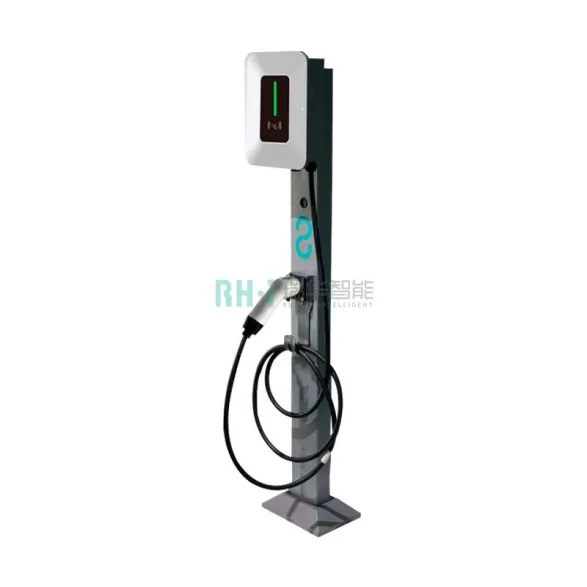Portable eV Charging: A Flexible Solution for Electric Vehicle Owners
Portable EV charging refers to charging an EV with portable EV chargers. The advantage of this approach is to provide charging solutions in areas where charging infrastructure is limited or non-existent. They provide flexibility, mobility and convenience.
Let’s take a deeper look at the features, market trends, and application scenarios of portable EV chargers.

Features of Portable Electric Vehicle Charging
Mobility: the portable charger is designed to be lightweight, easy to carry and quick to set up for use at home, at work or while traveling. It offers great flexibility and can easily cope with different charging scenarios, ensuring that EV users have charging support wherever they are.
Charging speed: Depending on the model, portable chargers vary in power output and therefore charging speed. Some high power chargers are able to deliver a significant charge in a shorter period of time, especially during long distance travel or emergency situations, saving users valuable time.
Compatibility: Most portable chargers are compatible with a wide range of electric vehicles, coming with different types of cables and adapters to meet the charging needs of various models. This makes portable chargers ideal for many electric vehicle users, especially for home and business users who own different makes and models of electric vehicles.
Safety: Portable chargers are equipped with multiple safety features such as overcurrent protection, temperature control systems and grounding protection to ensure safety during use. These safety features help prevent potential risks such as overheating and short-circuiting, allowing the charger to work reliably in a variety of environments, safeguarding both the user and the electric vehicle.

Portable Electric Vehicle Charging Market Trends
The portable charger market will continue to grow as electric vehicles gain popularity, especially in emerging markets and regions lacking fixed charging infrastructure.
As technology evolves, portable EV chargers will become more efficient, charge faster, and may even integrate wireless or contactless charging technology. Some portable chargers will be equipped with built-in solar panels to support the use of renewable energy for outdoor or sunny areas.
Future portable chargers will be smarter, allowing for remote monitoring, management and optimization of the charging process through mobile apps or IoT technology.
Portable Electric Vehicle Charging Application Scenario
Portable EV charging provides a convenient charging solution in a variety of scenarios.
For example, it can be used as an emergency charging device for roadside assistance when an electric vehicle is low on power; it can provide temporary charging when there are no fixed charging stations or parking spaces available; it is also ideal for charging at festivals, camping trips, or in the driveways of friends and family; and during construction or renovation projects, such as home improvements, a portable charger ensures that an electric vehicle’s power is available without the inconvenient charging station facilities .
Portable electric vehicle charging power connections
Portable EV chargers usually need to be connected to an external power source in order to provide charging for the EV. Here are a few common power connections:
1. Household electrical outlets
Many portable chargers can be connected to a power source through a standard household outlet (e.g., 120V AC) and are suitable for charging in places such as your home, office, or a friend’s garage. Due to the lower power of this type of outlet, the charging speed is slower and suitable for daily charging needs.
Some portable chargers support connection to high power outlets (e.g., 240V AC) such as NEMA 14-50 outlets, which are typically used for high power devices such as appliances. Connecting a charger through a high power outlet can significantly increase charging speed, but you need to make sure that the outlet and circuitry can handle the appropriate current and power.
2. Mobile power or generators
Some portable chargers support connection to mobile power sources or portable battery packs, which typically use lithium-ion batteries that can charge an electric vehicle without an external power source, and are suitable for camping, outdoor activities, or emergencies. However, charging is slow and range is limited.
Using a generator to power a portable charger is an effective way to provide power in remote areas or during outdoor activities. Generators are capable of providing a stable AC power source, but issues such as fuel consumption, noise and emissions should be noted.
3. Solar Charging
Some portable chargers are equipped with built-in solar panels or can be connected to external solar panels to charge by utilizing sunlight. Suitable for use in sunny places, but due to light intensity and weather conditions, solar charging is relatively inefficient and is usually used as an auxiliary charging method.
4. Vehicles with their own power supply
Some larger vehicles (such as RVs or trucks) may be equipped with an on-board generator that can provide power to a portable charger. This is suitable for long trips or if you need to charge multiple electric vehicles, but again, you need to be aware of the power and fuel consumption of the generator.
Summary
Portable EV charging requires plugging into a power source in order to charge, and the choice of power source depends on actual needs and available resources. Whether it’s through a home power source, a high-power outlet, a mobile power source or a generator, portable chargers offer EV users a flexible and efficient charging option, especially for those scenarios where fixed charging facilities are not available.
